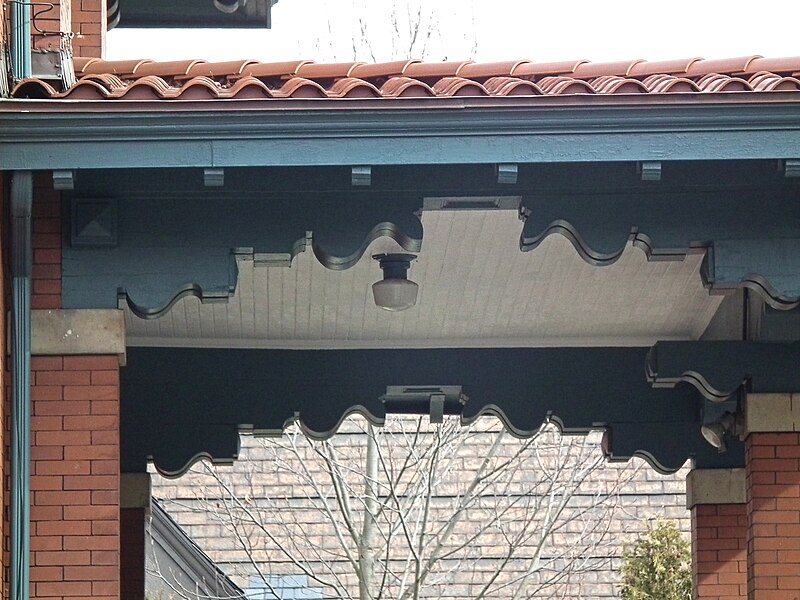
Originally this house on Tennyson Avenue was a Renaissance palace with a little whiff of Prairie Style. It was built in 1910 for Martin G. Bauer, Jr. The architect, Maximilian Nirdlinger, drew it in the common shape of the Pittsburgh Renaissance palace, with exaggerated brackets that look westward to Chicago but also recall the Italianate houses of a generation earlier.
At some point, the owners decided what they really wanted was a Southern plantation mansion. They amputated the porch and left a house-wide scar filled in with stucco that only draws attention to it, and then added a two-storey round portico, spending a lot of money to leave the house looking socked in the face.
We can imagine what the house looked like with the porch intact. But we don’t have to work very hard at it, because across the street is a very similar house, built one year earlier and designed by the same architect:

Here we see how the houses were both intended to look. The front porch emphasizes the breadth of the house, making it look long and low in spite of its three floors.


Now we can turn back to the Bauer house and see what it was trying to be. In old Pa Pitt’s opinion, it is always best to stick to the original style of a house in making additions or alterations. Any attempt to make the house into something it is not draws attention to the fact that it is not that thing.




